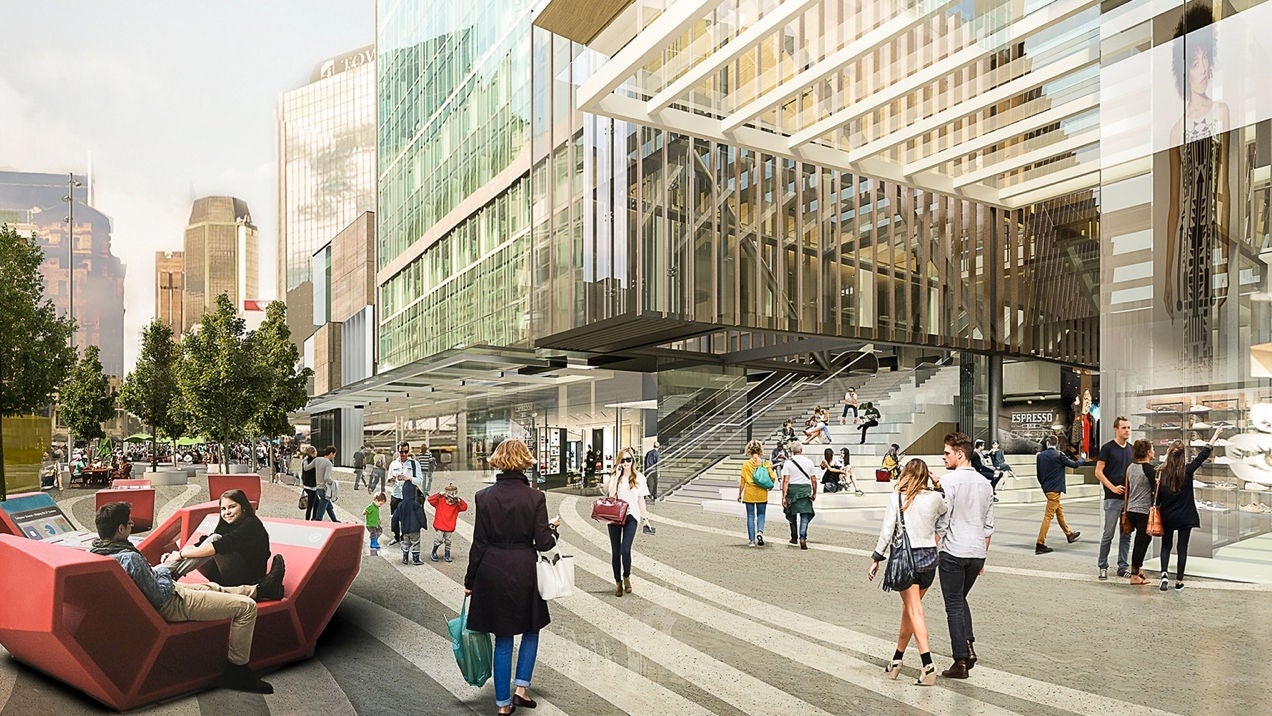At the meeting point of the Queen Street valley and Auckland waterfront, Commercial Bay draws together mass public transportation, international quality retail, and workplace environments, underpinned by best practice urban design and sustainability objectives.
Commercial Bay case study

Looking south at Commercial Bay
The Commercial Bay development demonstrates the value that meaningful engagement with Mana Whenua and application of the Te Aranga Māori design principles can bring to large scale private sector development.
This engagement and approach to the development has influenced and enriched design outcomes, and will provide users with a deeper understanding and connection to place.
The development will be world class in quality and reflective of the unique identity of Tāmaki Makaurau (Auckland), making an important contribution to Auckland’s urban heartland.
Māori Values & Design
The design of the Commercial Bay examples have been guided by Māori values and associated design principles and objectives, such as:
Mana whenua - landscapes,
Whakapapa - names and naming,
Mahi Toi - creative features,
Taiao - the natural environment,
Māori Tu - envionmental health and
Ahi Kā - the living presence.
An early focus of the project team on forming strong relationships with Mana Whenua has provided a platform from which to apply the Te Aranga Māori design principles, allowing these key concepts to be articulated through design across the development. The benefits of incorporating the Te Aranga Māori design principles as part of a comprehensive design programme are evidenced in the unique and culturally resonant design outcomes.